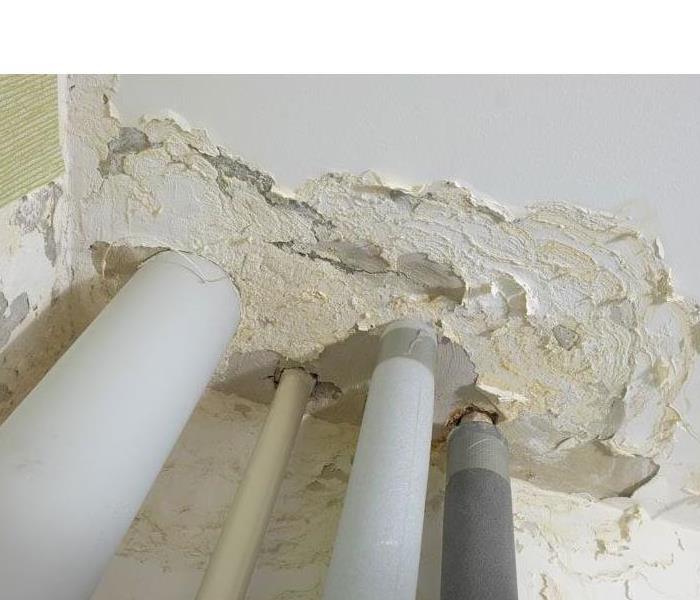Home Inspection - Possible Water Damage
10/15/2021 (Permalink)
Can water damaged lead to some of the following topics when you are having your property inspected for listing or buying?
Cracked Walls and Chimneys: Diagonal, or large jagged cracks, in a wall or chimney could be a sign of structure settling, or larger structural issues. Keep an eye out for widening gaps. Gaps reaching ¼” could be an indication of larger issues and should be looked at by a structural engineer, or reputable builder. However, not all cracks mean there are structural issues. The wood structure of a home can shrink, or expand, depending on temperature or humidity fluctuations. Also, the green lumber in new homes will shrink as it dries. Cracking along drywall seams and nail “pops” are usually indicative of this type of movement and are easily repaired.
Bowed or Bulging Walls: Bowed or bulging walls are the result of extreme loads and can cause serious issues with the structure. Walls can bow or bulge due to increased loads from a roof that is too heavy, increased floor loading or hydrostatic side loads. If you notice a bowed or bulging wall it’s best to have it looked at whether it’s cracking or not.
Uneven Windows and Doors: Uneven doors or windows could be the result of structural shifting, or simply poor framing. When checking around windows and doors check for proper function and cracks around the opening, specifically the corners. The corners of windows and doors are generally subject to more pressure than the remaining wall and could be the first place you notice a crack. Doors rubbing the floor or door frame, windows binding, or the development of large jagged cracks around the framing are an indication somethings off. As mentioned earlier, it could just be poor framing. However, if the problem worsens, or cracks begin to widen, they should be looked at by a structural engineer or reputable builder.
Sloping, Sagging, or Cracked Floor: Common home foundations may be made of a concrete slab or a wooden floor joist system. Both systems have their pros and cons, and both can develop issue if conditions permit. Concrete slabs can develop cracks which could be a normal part of settling. As with cracks in a wall, pay attention to gap widening and have them looked at if you they continue to widen. When slabs are found to have gaps widening to the point of concern it’s generally due to poor compaction or poor soil. Damage can be lessened and remedied if addressed early on.
Wood systems can develop their own issues such as sagging, or sloping. You may notice an obvious dip or see that the base trim has developed an obvious gap between itself and the flooring. This could be caused by multiple issues; there may be a joist, or series of joists, that have developed a sag from improper column spacing, there could be a termite infestation that has damaged a joist(s), or you may have pier deterioration issues.
Regardless of which style floor you may have, if you’re seeing signs of worsening issues its best to have it inspected and repaired if necessary. These types of issues can compromise home safety and structural integrity if ignored.
This implies the same if the property has a longer term or pre-existing water issues that have gone unnoticed.
Call SERVPRO of Columbus, for your next moisture check or mildew inspection. 706-568-1934





 24/7 Emergency Service
24/7 Emergency Service
